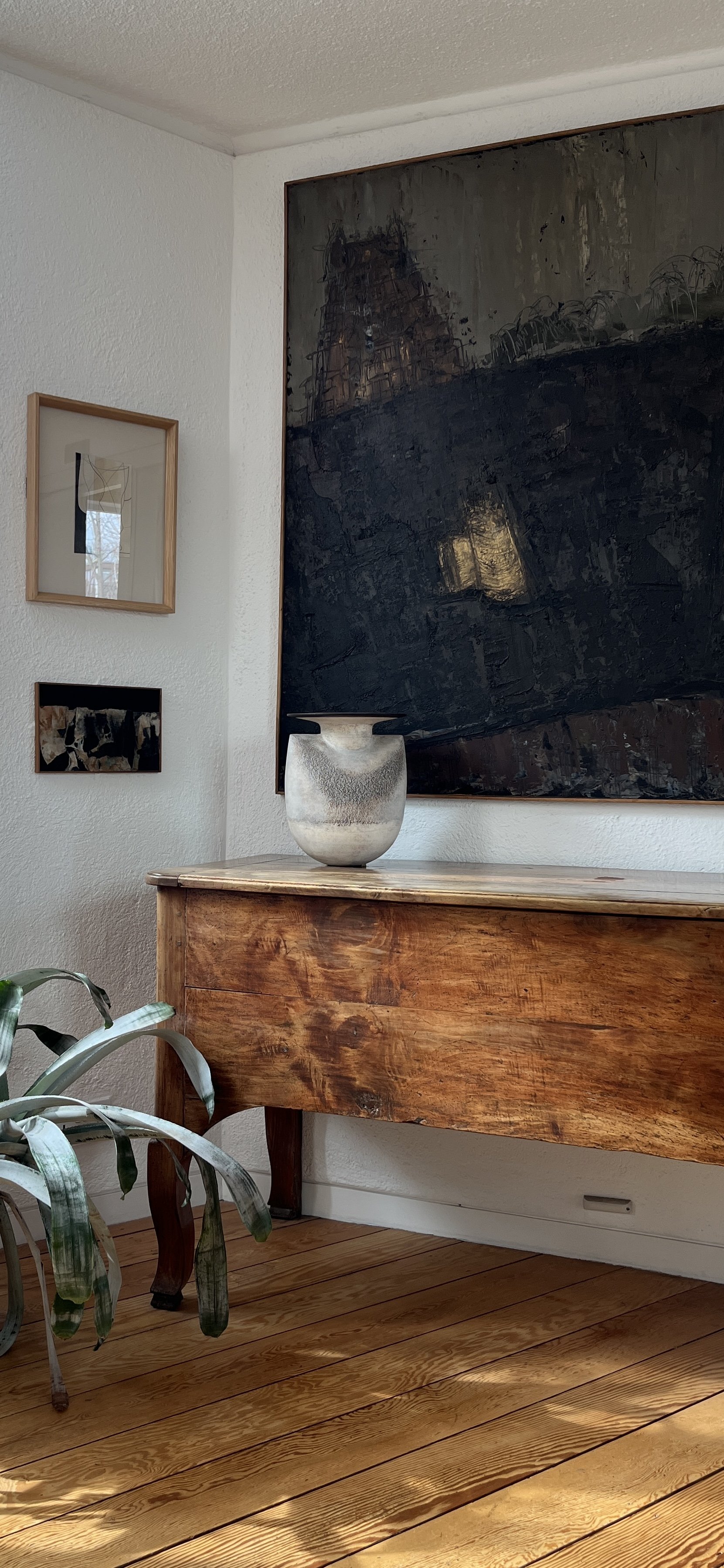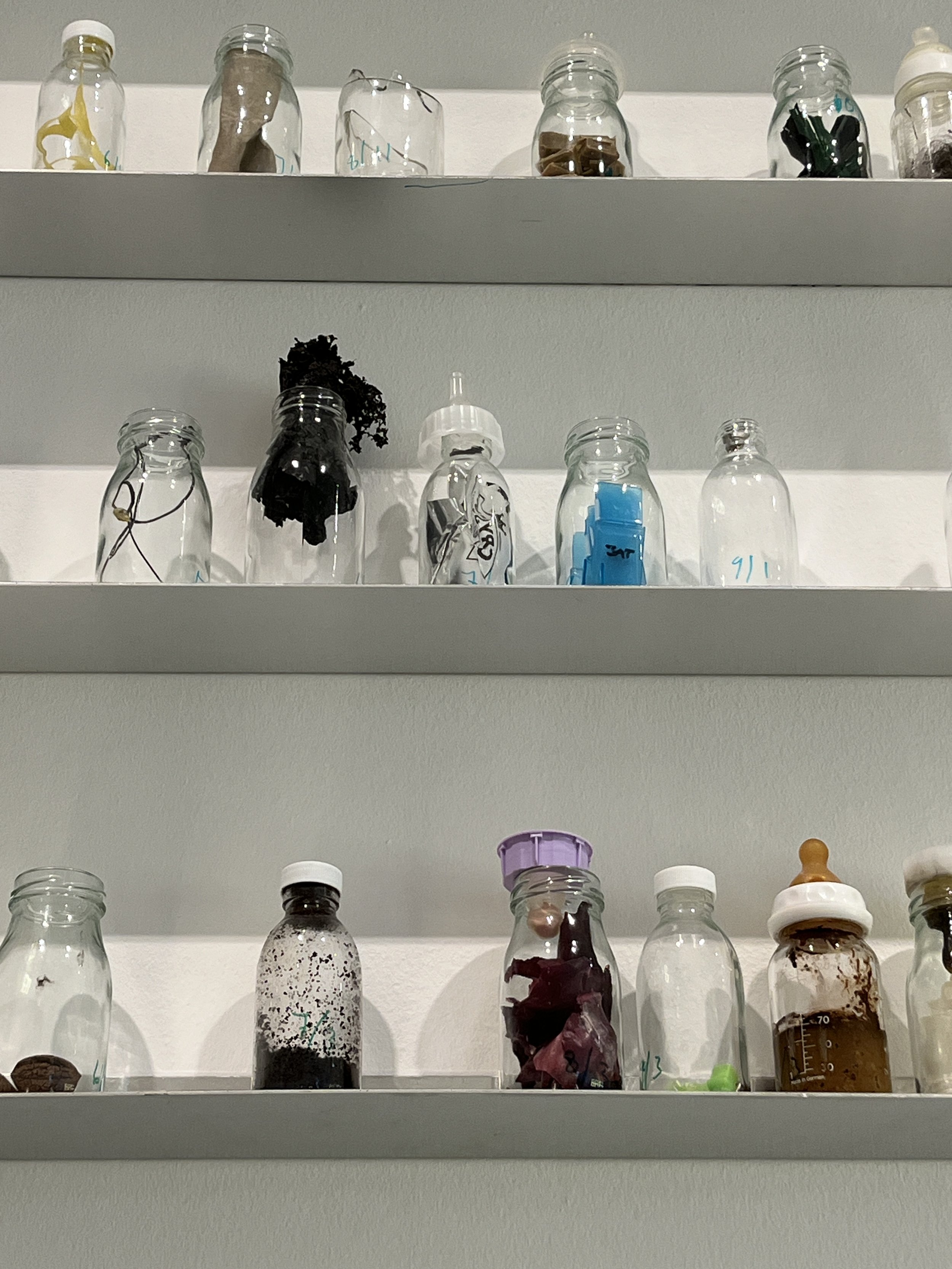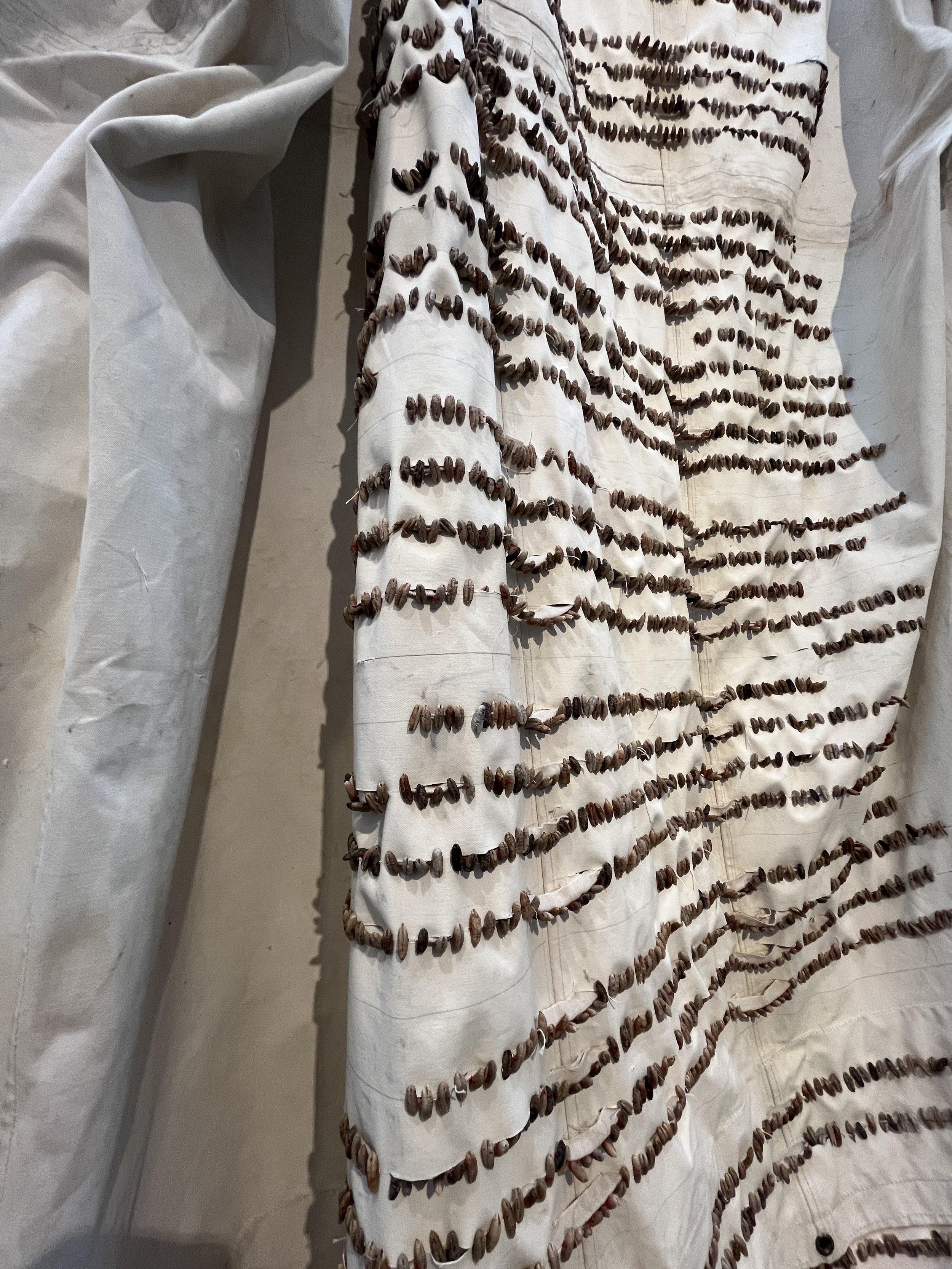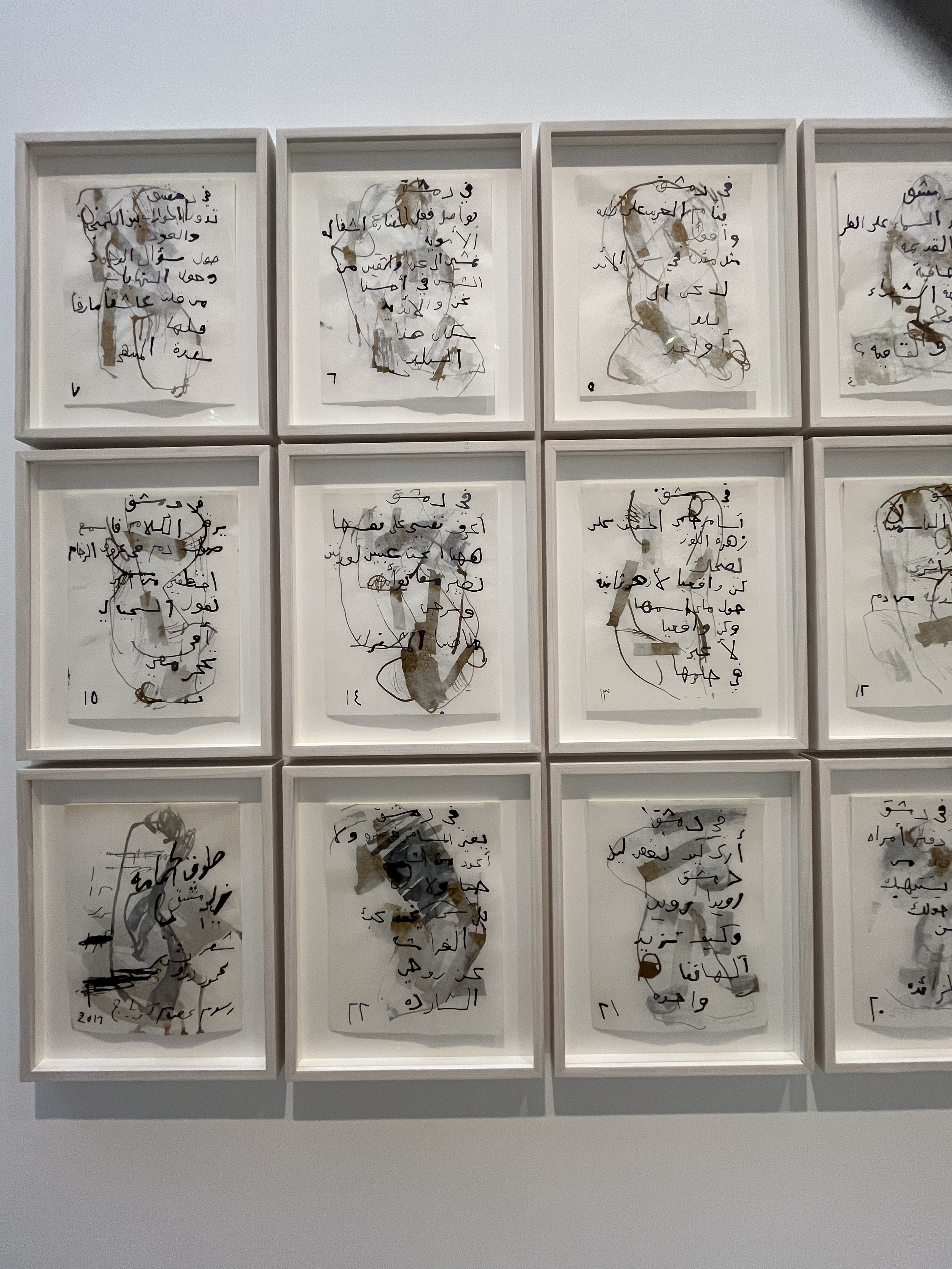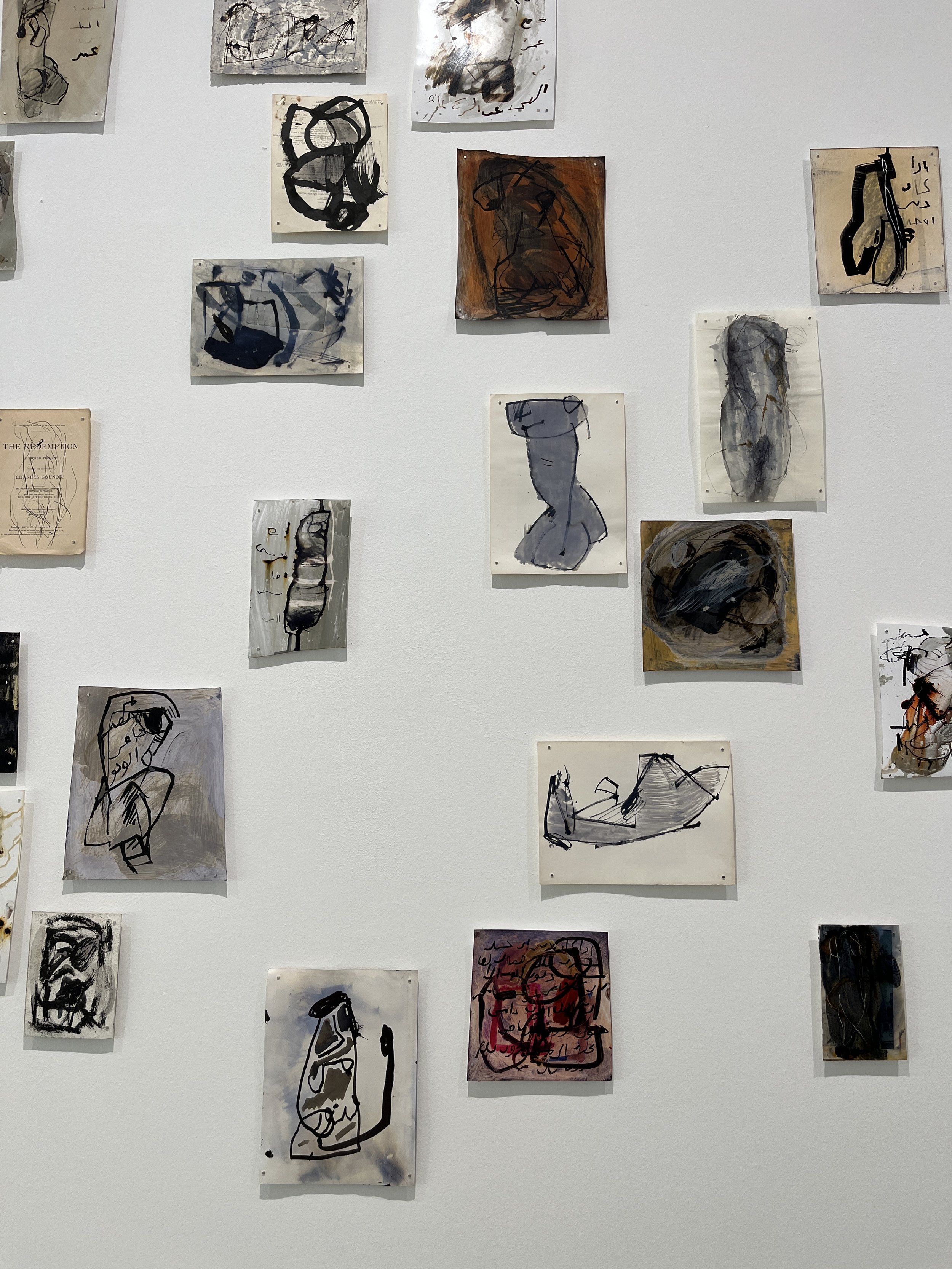Thought provoking trip to Cambridge.
While visiting Cambridge the other week, I finally went Kettle’s Yard. I have heard so much about it from others - what a fabulous and extraordinary place. If you’ve not been, it is a historic house that was the home of Jim Ede and his wife Helen from 1957-1973. It shows his remarkable collection of art including works by Helen Frankenthaler, Ben Nicholson, Joan Miro, and Barbara Hepworth, among many others. (I spy a Hans Coper below). You can wander around the house, sit in the original chairs and take in the huge collection. It is all just as they left it, so sitting on the couch in the newer extension pretending I’d been invited round for tea was pretty easy.
Kettle’s Yard
In addition to the collection within the house, they also have a contemporary art gallery and here at the time of my visit, an exhibition by Syrian artist Issam Kourbaj : Urgent Archive. The exhibition focusses on the ongoing conflict in his home country of Syria. It is a very powerful exhibition which explores themes of destruction, loss, memory and renewal. It was SO good! He uses sculpture, installations, works on paper and video to explore the effects of conflict on people and society, particularly women, children and agriculture which is often under-reported when the news talks of casualties.
Written in Blood. 2019 Ink and mixed media on repurposed books & sheets of music.
‘Written in Blood’ is a large installation on the floor in one of the galleries. It references the story of imprisoned human rights journalist Mansour Omari who smuggled out the names of fellow prisoners to let their families know they were alive. The prisoners cut small pieces of their cloths to write on, using pieces of sharp wire to cut their skin and write the names in blood, mixed with rust. One of the imprisoned people was a tailor who fixed it into the cuffs of the first person to be released to take the information out into the world. Omari was that person. Omari said ‘ Part of why I decided to document their names in this way is it’s a challenge to the government: no matter what you did, even if you put us underground, we will still work on what we believe in and you will never conquer’
‘Is it from a grain of wheat that the dawn of life bursts out….and also the dawn of war? Isaam Kourbaj
Seeds are a recurring theme in the exhibition as Kourbaj considers the impact of war on agriculture, food production and the natural world. Seeds also represent life and the resilience of human spirit despite hostile environments. The magnification and size of the burnt seed images also revealed a slightly hairy, skin-like texture which also cleverly references the human casualties too.
Installation using soap that has been made in Aleppo using local materials for thousands of years & pigments and indigo stones depicting Syria’s ‘Dead Cities’ - 700 setlements that were abandoned between 8th-10th centuries. In recent years the settlements have become reused by displaced people seeking refuge among the ruins.
This exhibition definitely made me think about the impact of conflict on new levels. I came away with a more intimate understanding of the realities of war experienced by my fellow humans. The date stones sewn onto tent canvas as a way to mark time, the continual audio roll call of womens’ names who had died but were unreported because they were women, the baby feeding bottles filled with anything but milk. I loved the links between the effects on nature and ourselves, reflecting the horrific destruction and the human costs of war but also the message of hope and renewal against all the odds. It was a poignant and powerful telling of real stories in an intelligent and sensitive way.
It is on until 26 May 2024 and i recommend a visit if you can. I’d love to know what you think if you go! Find out more at the Kettle Yard Website for opening hours etc

